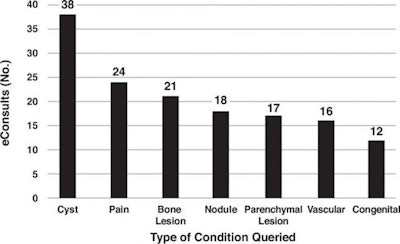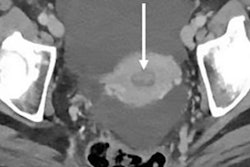
Electronic consultations between primary care physicians and radiologists may help avoid unnecessary imaging, according to a study published on August 18 in the American Journal of Roentgenology.
Researchers from Canada evaluated the value of the Champlain BASE eConsult service, which is designed to improve patient care by enabling primary care providers (PCPs) to more easily collaborate with radiologists.
"The eConsult electronic consultation platform was developed to provide a secure method for PCPs to ask a specialist patient-specific questions supported by relevant clinical information," stated lead study author Daniel Walker, a researcher from the University of Ottawa, in a press release.
The team analyzed 302 radiology electronic consultations that took place on the platform between September 2012 and January 2017. The researchers originally presented their findings at the 2018 American Roentgen Ray Society annual meeting in Washington, DC and the 2018 Canadian Association of Radiologists annual meeting in Montreal, Québec, Canada.
Out of the radiology consults, 31% were for abdominal imaging, 25% were for neuroradiology, and 20% were for musculoskeletal. Orders for anatomical regions varied, but they were most prominent for the brain (16%), lungs (10%), and spine (10%).
More than one-third of the consults (37%) related to patient workup, and another 31% were for surveillance of imaging findings. Imaging most often revealed cystic lesions (13%), pain (8%), bone lesions (7%), and nodules (6%).
Importantly, the use of the platform led to positive changes in patient care. In more than half of cases (55%), imaging findings altered patient management, and in more than one-quarter of cases (28%), it avoided unnecessary tests.
 The eConsult service was used for a variety of conditions. Image courtesy of the American Roentgen Ray Society (ARRS), American Journal of Roentgenology (AJR).
The eConsult service was used for a variety of conditions. Image courtesy of the American Roentgen Ray Society (ARRS), American Journal of Roentgenology (AJR).The eConsult service was also well-received by providers, with three out of four primary care physicians saying the electronic consults provided excellent value. However, the authors noted there could be improvement when it comes to follow-up imaging of cystic lesions and imaging workup of patients in pain.
"It may be helpful for radiologists to alter their reporting style to include clear follow-up guidelines for incidental findings," the authors concluded.



















